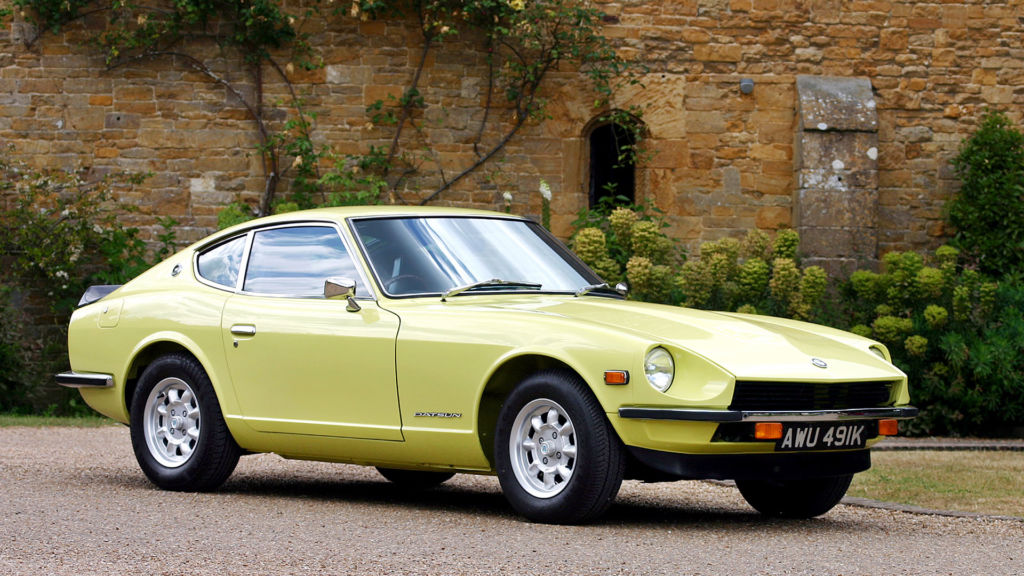
Why You Need to Buy a Datsun 240Z
admin
A lightweight rear-driver with a straight-six and sexy looks.
What more do you need?
In the optimistic glory of the Space Age late Sixties, Japanese automakers produced a number of creative, forward thinking sports cars. These included the Toyota 2000GT, the Mazda Cosmo, and the Nissan Skyline GT-R. But while these cars were advanced and sophisticated, they weren’t really made with the American market in mind.
This was in part because they were limited-edition vehicles intended to showcase and celebrate bold Japanese engineering and design within the Japanese home market. It was also in part because the emergent foothold the Japanese manufacturers were developing in the States revolved around the triumvirate plays of efficiency, reliability, and affordability, and these cars were antithetical in all three of these prongs.
The Datsun 240Z changed all of that.
Priced to compete with Alfas, MGs and Triumphs, but featuring performance that challenged cars like the Porsche 911 and Jaguar E-Type—cars that cost twice as much—the Z was at once a flagship and a value play. Although Datsun had the 1600/2000 Roadster and the economical little 1200 sedan and fastback, its direct rivals were better established. They were also British and Italian in the early 1970s, the precise moment at which the Venn Diagrammatic intersection of outmoded engineering and shoddy build quality reached peak overlap. Datsun trounced them.

“It was one of the first great affordable track sports cars that came out back in the day,” says T.P. Bakke (“T.P., like Top Priority,” she explains), who has been running the Houston-based Z-car performance and restoration shop Awesome Z since 1995, and working on Nissans for 30 years. “They handled well, they held the curves in a turn, and they were just adorable,” Bakke says. “When they were introduced in the Seventies, for $3,700, you couldn’t beat them for the price.”
Like many Japanese designs of the era, the 240Z had styling that wasn’t exactly original. Elements of Ferrari 275 GTB/4 and Jaguar E-Type are undeniable, if shrunken. The same can be said of the motor, a 2.4-liter straight-six that was smaller than (but similar to) Jag’s 3.8- or 4.2-liter. And the interior wasn’t Ferrari or Jag grade, with a compressed sawdust and plastic resin “wood” steering wheel, a bumpy molded plastic and “metal” dash, and diamond-quilted “leather” covering the transmission tunnel and rear cargo area.
But the 240Z was also correspondingly lighter and smaller. It moved, and it danced. And it looked delicious in period-correct hues of lime green, pear yellow, chocolate brown, and cheddar orange.
“It’s an eye catcher,” Bakke says. “Even if you get them out on the road today, people do a double-take and look at you. And it’s fun to drive, whipping in and out of traffic. Of course, you don’t want to get up next to an 18-wheeler. They might not see you.”
All of this, along with proven racing chops, translated into massive sales. About 160,000 240Zs were sold in North America during the first three model years—that’s nearly 97 percent of the car’s exports, far exceeding company predictions.
Sadly, many of these first-generation 240Zs succumbed to neglect, rust, and the dreaded Small Block Chevy motor conversion. Thus, they ended up junked, crushed, or wrapped around trees. Fortunately, the cars that remain are often the ones that were well cared for. And they’re finally beginning to get the attention they deserve, rising in value, like their contemporary competitors from Germany, England and Italy. But, like their design and engineering, this augmentation is arriving on a sort of 7/10 scale.
According to our friends at Hagerty, respected authorities in classic car valuation, pristine “Condition #1” examples of the 1970-1973 Z cars have appreciated by more than 50 percent over the past five years, ascending in price from about $33,000 to nearly $55,000. But less perfect “Condition #2” and “Condition #3” cars have not followed the outrageous path of the 911 and E-Type, and remain far more affordable. C2 cars have gone from $24,000 to $34,000, while C3 Zs have climbed from $15,400 to $17,000.

It’s always best to buy the best car you can afford. But in this case, we’d probably settle for a really nice driver in slightly better than average condition and use it as much as possible in nice weather. Down the line, we might do a sympathetic restoration, as parts and support are readily available.
“We have a whole Z-car nation out there that is totally devoted to Z-cars,” Bakke says. “You have your Porsche people that love the old 911 Porsches. Z-cars, they have their own following in the same way.”
Unique styling and engineering, increasing value and rarity, and relative affordability are keystones with all of the up-and-coming collectibles in this series. But for each car we feature, we wonder what is it that keeps people coming back to the early Z?
“It’s the baby,” Bakke summarizes. “You’re going to care for it, you’re going to make sure it’s washed and cleaned and put away—in a warm dry spot, not out in the weather. And then when the kids finally go off to college, guys are digging these cars out and they’re bringing them to me and saying, ‘TP, restore my baby for me, because I did the marriage thing, I did the kid thing. I want my baby back.’”
http://www.thedrive.com/




